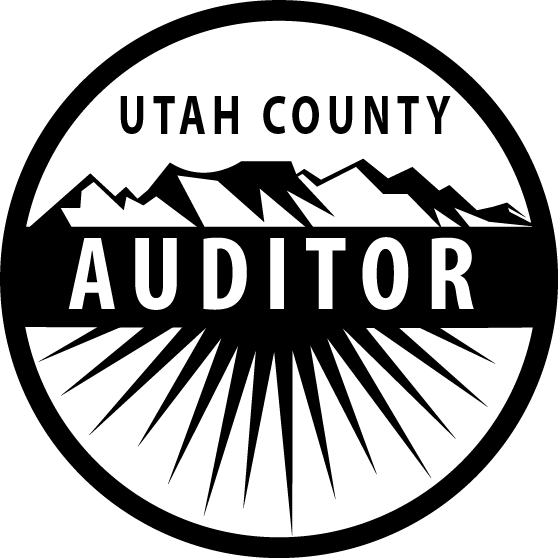
Property taxes help to pay for a variety of public services. In Utah, additional property tax revenue is not a simple matter of raising property values to increase revenue. Rather, the base property tax revenue is the same from the prior year. Assuming everything else remains equal, an increase in property value would mean a decrease in the tax rate, and therefore, the total dollar amount in taxes would stay the same. Of course, the reality is a little more complex.
There are three elements in determining the property tax for each property: Budget, Taxable Value, and Tax Rate. Each element is explained in detail below.
Every property falls under several different taxing entities, which are then grouped together into a tax area. In that tax area, the budget of each taxing entity is the main force behind the amount of property tax. Taxing entities are guaranteed the prior year's property tax revenue regardless of overall property values. This means when property values change, there is neither an increase nor decrease to their budget.
This makes property tax revenue a very stable source of income, which serves as the foundation of many taxing entity budgets. If a taxing entity, like a city or a school district, requires a budget increase over last year, the entity must hold a Truth in Taxation hearing to allow public comment.
The "Truth in Taxation" law requires public notices and public hearings when a taxing entity proposes an increase in its property tax revenues (not rates) above those collected the previous year (tax revenues generated by "new growth" in an entity's tax base are exempt from this). The public hearings are required to allow officials to explain the reasons for the proposed increase and allow citizens to comment on any proposed increase.
By state law, all of the approximately forty taxing entities in Utah County are obligated to follow Truth in Taxation each year. Even though Utah County is responsible for collecting the taxes for each taxing entity, each taxing entity is independent of all the others within the county. For example, Utah County does not control the budget for the Alpine School District.
If you add up the total assessed value of each property in the county, then subtract any tax exemptions, like the residential exemption or tax exempt properties, you have the total taxable value for the county. The taxable value interacts with the budget to calculate the third element in the equation: tax rate.
How do changes in assessed value affect property owners, especially when values go up and down across the county? While it makes sense to think that property tax will go up and down with the value, it doesn't always happen that way.
There is a relationship between the assessed value and taxes due. However, this is where general perception and actual practice can take different paths. Broad changes in assessed value will create tax shifts. These tax shifts will affect different properties in different ways.
For example, if there was an average of a 10% value increase across the county, a property with a 5% value increase could see a decrease in tax. Conversely, if the overall county values decreased 10%, and a property only decreased 5%, the tax on this property could increase.
Every year, the assessed values of different geographic regions and different property types throughout the county change at different percentages. This creates a tax shift away from some areas and property types to other areas in the county. As in the example above, there will inevitably be some property owners who receive a reduction in assessed value but see an increase in property tax. Remember these are simply examples and may not apply to each and every individual property.
The equation to calculate the tax rate is:

For example, if a taxing entity has a budget of $100,000 and a taxable value within its
boundaries of $100 million, then the tax rate for that entity would be 0.1%:

This rate changes every year. If the budget remains the same but the assessed value changes, the
rate will change opposite to the assessed value. Using the same example budget again, if the
taxable value for this tax entity increased to $110 million, the rate would decrease to .0909%.

Property taxes in Utah are managed through the collaborative effort of several elected county offices.
The Recorder's Office and the Surveyor's Office records the boundaries and ownership of each property in the county.
The Assessors Office estimates the fair market value of each property.
The Auditors Office calculates the property tax rate based on budget requirements and the total taxable value determined by the Assessors Office. The Auditor is also responsible for mailing the initial notice of value and receiving appeals of value.
The Treasurer's Office sends out the final tax bill, receives property tax payments, and distributes the funds to the various taxing entities.
The County Commission approves the annual budget for county agencies and, acting as the Board of Equalization, hears appeals that do not fall within the typical appeal and hearing structure.
